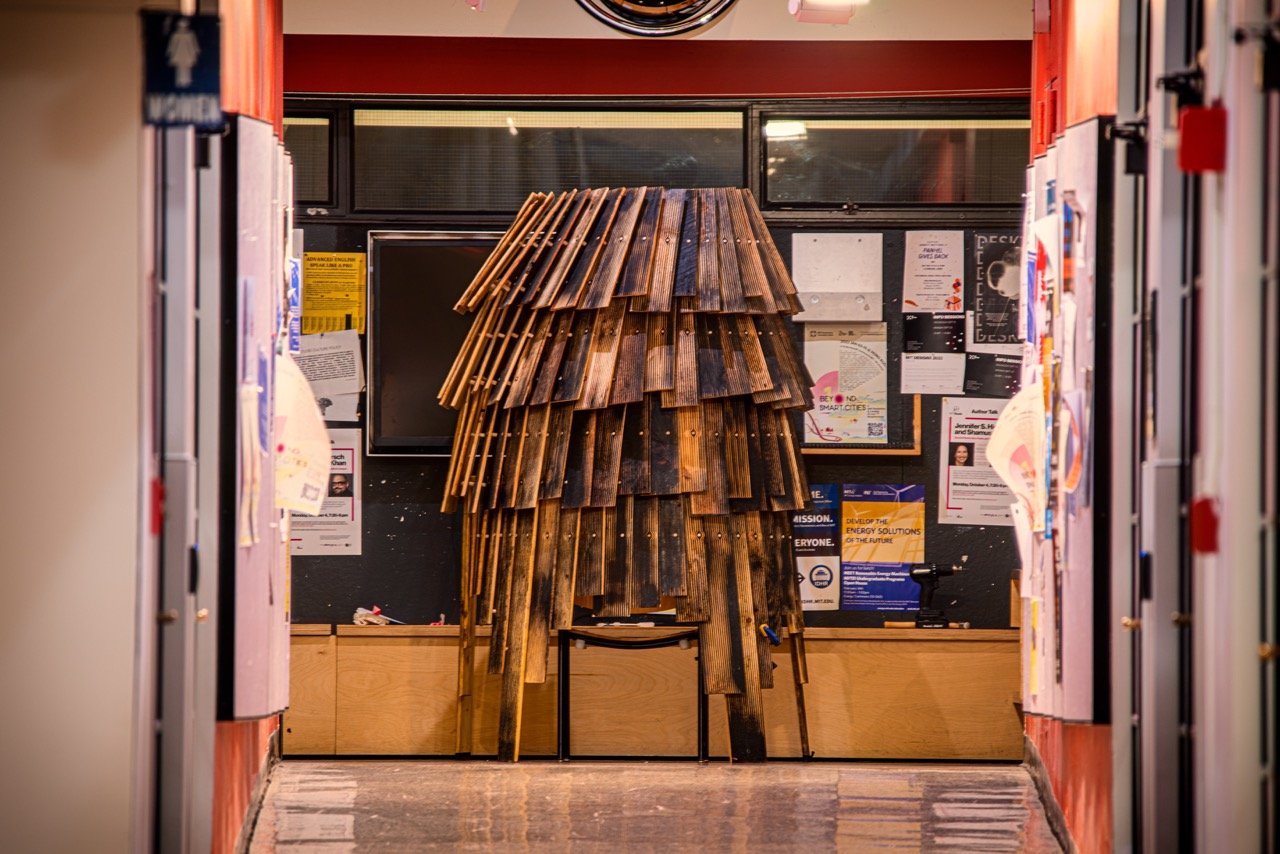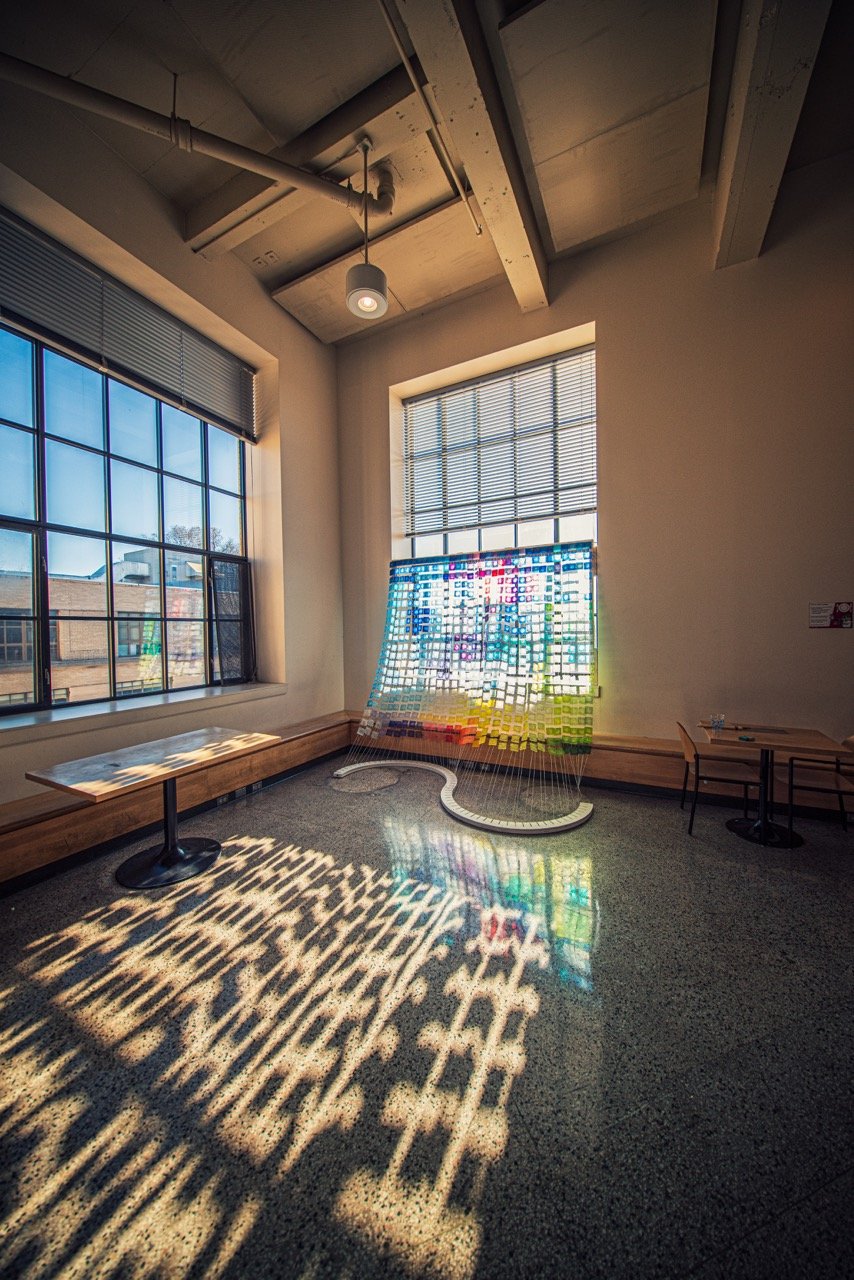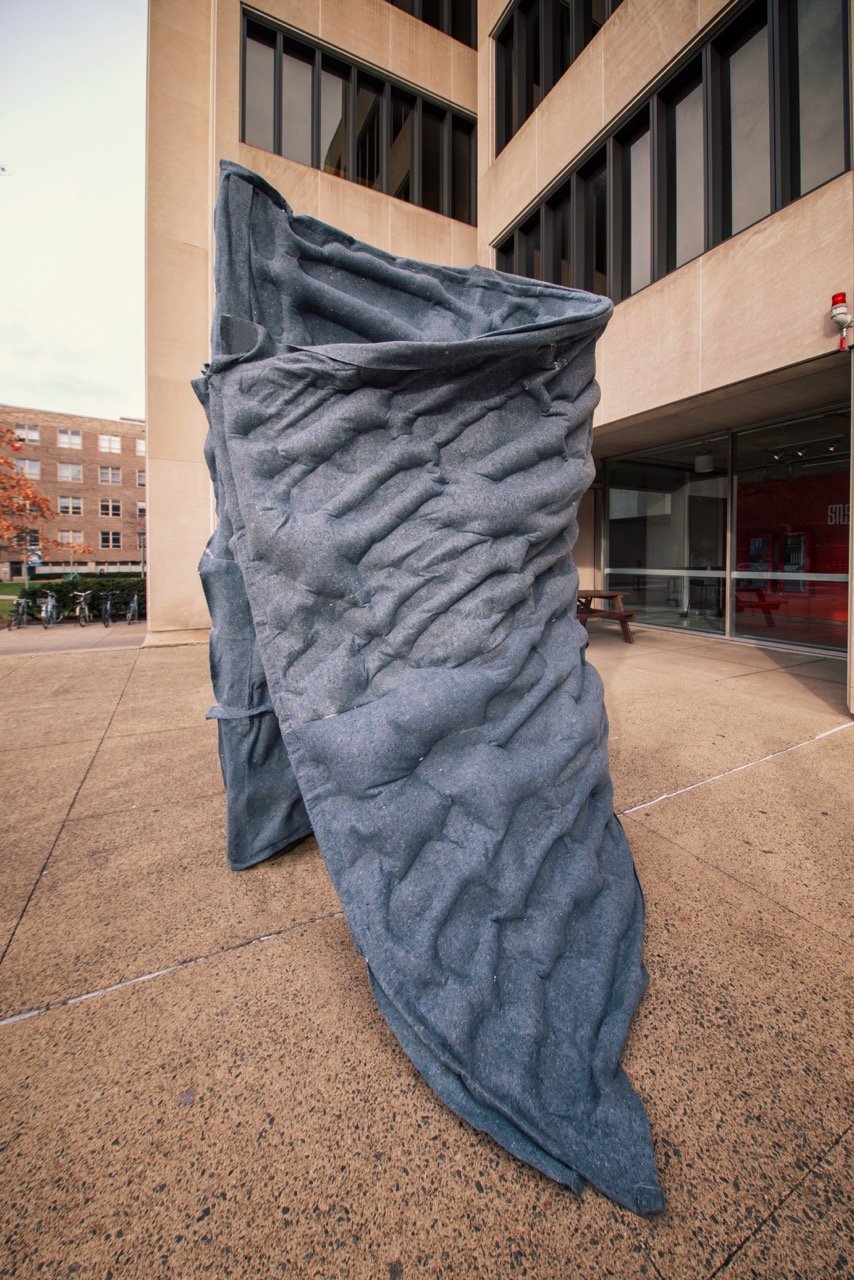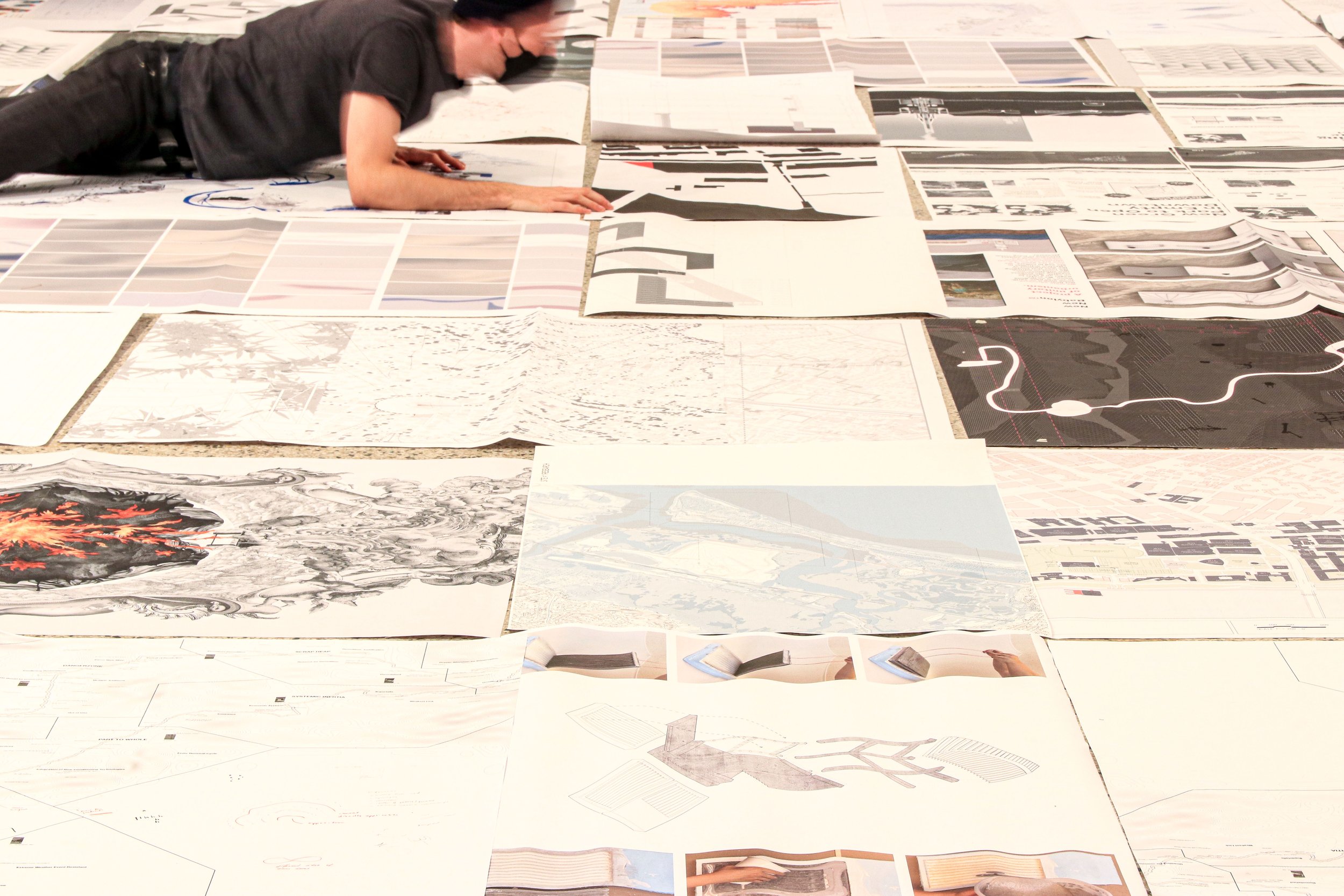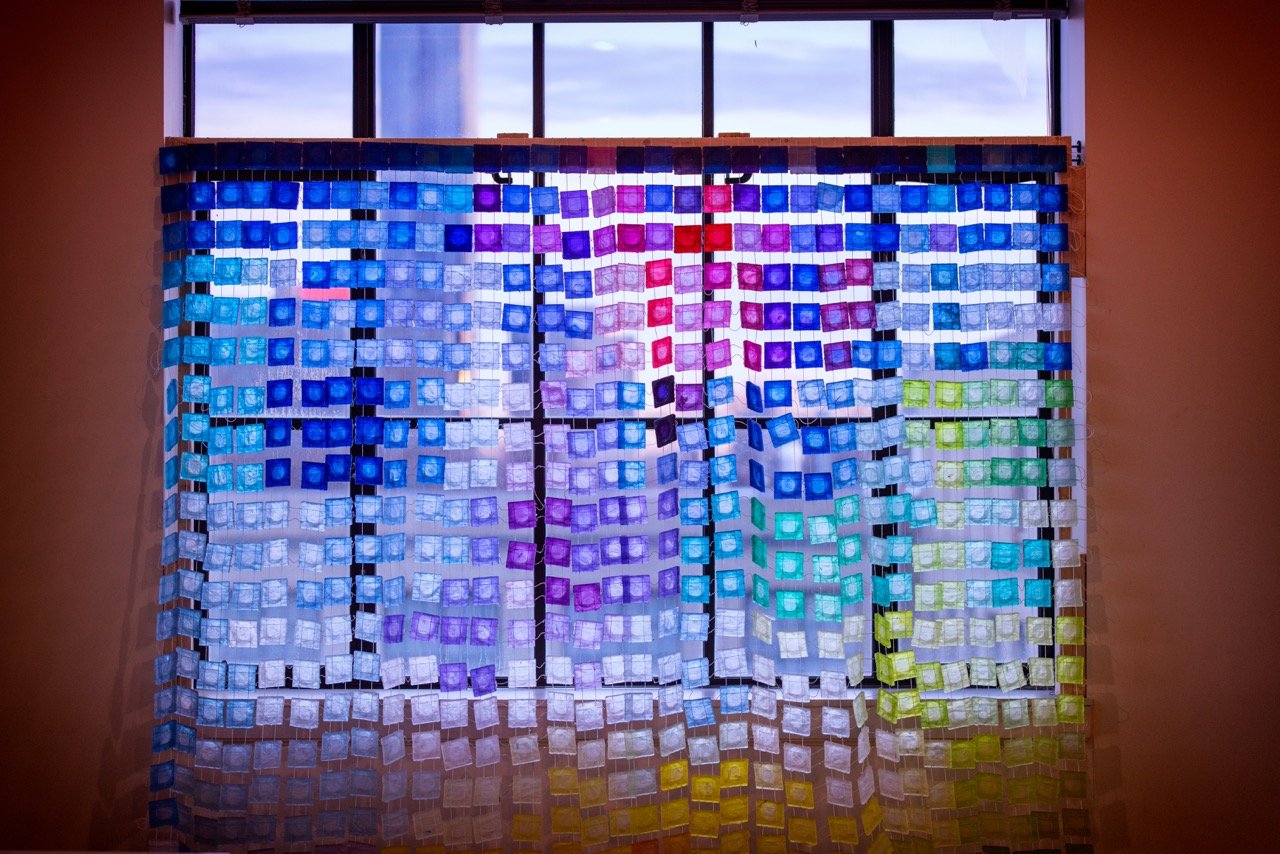
Instructor(s): Diego Pinochet, Lavender Tessmer,
Schedule: TR FR 1- 5pm, OH TU 1- 5 pm. 3-415 studio
TA: Gil Sunshine, gils@mit.edu
Guest Lecturers: Joseph Choma, Maya Hayuk
Making Ingredients is an explorative fabrication studio dedicated to producing vibrant, spatially rich installations in celebration of reinhabiting our physical space at MIT. The studio will draw on references that range from architectural fabrication research to street art and its ability to transform the built environment through colors, patterns, and light. Specifically, the studio will focus on the physicality of design and making that has been largely absent at MIT for the last 1.5 years.
Collaboratively, we will work around the MIT campus to evaluate the contextual, conceptual, and technical aspects of design and making. On one hand, we will document and analyze the immediate externalities of the built environment, highlighting the contextual elements of design and deployment such as site constraints, material life cycles, and the metrics of time and labor. On the other hand, we will consider the distribution of skill, knowledge, and automation as drivers of design decisions. We will investigate the histories and contexts of digital fabrication machines and their impact on architectural design, as they are now ubiquitous in architectural education. Developing a critical standpoint, we will evaluate the contrasting views of the maker movement and its relationship to how architects design for machines. Finally, we will examine the process of design, representation, and fabrication through the lens of tacit vs. explicit knowledge while considering the opportunities and shortcomings of digital computation for encapsulating knowledge of physical techniques.
We will be joined by two guests – Maya Hayuk and Joseph Choma – who will meet with us regularly throughout the semester. Maya Hayuk will bring expertise from the realm of large-scale public artwork and its dialogue with the site, and Joseph Choma will contribute his experience and perspective in design computation and fabrication. They will provide valuable expertise and enrich the discussion about the design work and methodologies proposed by the students.
Learning Objectives/Pedagogy:
The studio will comprehend two parts: Research and proposal. In the first half of the semester, students will analyze and catalog the ingredients of architectural production, including materials, resources, tools, and skills. In the second half, students will propose strategic workflows from design to production, deploying physical prototypes and contextualizing projects within areas of fabrication research.
In the first half, students will:
- Develop a catalog of prototypes that strategically address externalities
- Physical and digital development will operate iteratively in parallel with each other
- Work is completed as individuals and in small groups, which will be newly configured for each
assignment
- Hands-on project development will be supplemented by readings, lectures, and discussion
In the second half, students will:
- Draw on the material produced in the first half to establish complete workflows for design,
fabrication, and installation
- Contextualize each project within an area of design and fabrication research
- Consider topics and strategies from the first half about the process of assembly and installation
